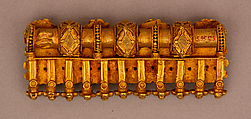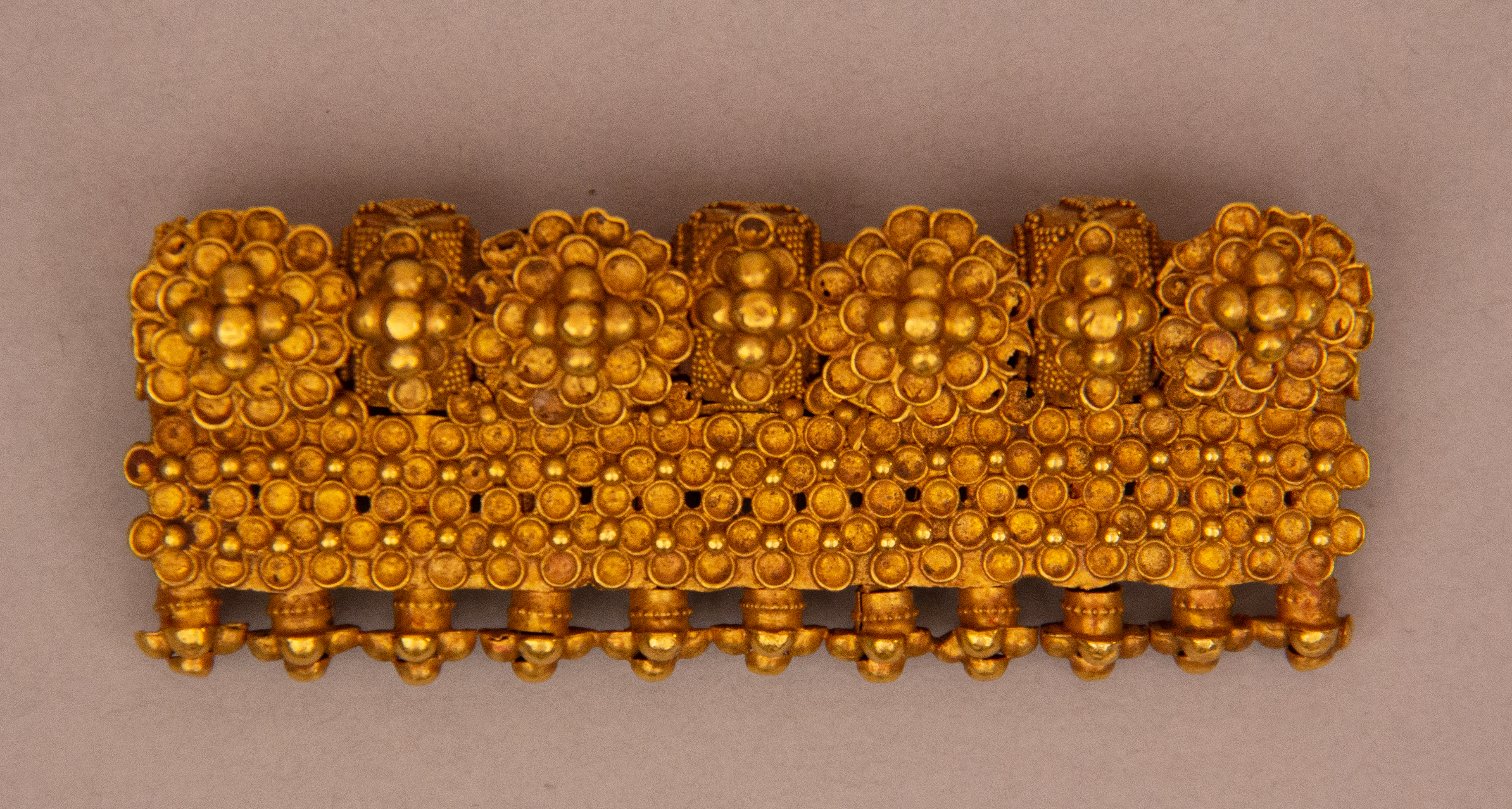Pendant
Not on view
Detailed granulation is known from Indian jewelry since antiquity. This elongated jewel may have been part of a necklace or a bazuband (upper arm band). The cylindrical shape references an amuletic form, that often held rolled-up papers with blessings or other protective words.
This jewel was formerly in the collection of American artist and designer Lockwood de Forest (1850–1932) who purchased many items while traveling in India between 1879–1881. He collected many different examples of jewelry from India, including several of the same type. Today, his assemblage in the Met serves as a near-comprehensive study collection of Indian jewelry from the late nineteenth century.
Due to rights restrictions, this image cannot be enlarged, viewed at full screen, or downloaded.
This artwork is meant to be viewed from right to left. Scroll left to view more.



